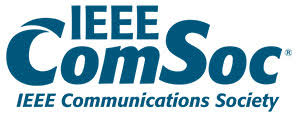5G cellular networks are coming and should be able to provide access to information whenever the huge number of end mobile users needs it, where they need it, in whatever format they need it, while at the same time reducing the ever increasing CO2 emission footprint of mobile communications. In this environment, broadband access in dense environments is targeting downlink and uplink connectivity per user at 300 Mb/s and 50Mb/s, respectively. However, these values are way beyond the upper limits of current LTE and LTE-A technology. For example, by assuming a connection density between 200-2500 connected devices per square Km, downlink bandwidth approaches 1 Tb/s/km2! While the solution for the provision of more bandwidth could be the introduction of mmWave Heterogeneous Networks, their implementation creates new challenges for the backhaul, which should provide connectivity at sufficient capacity and quality of service. In this sense, the convergence of wireless and optical technologies is able to realize a cost-effective 5G solutions, especially for high density areas. These considerations motivate the creation of a new Special Interest Group as a timely initiative that will focus on fundamental aspects of studying the performance of converged optical-wireless networks, especially for 5G applications.
The objectives of the SiG on Converged Optical Wireless Technologies for 5G Networks are listed below:
- To investigate new approaches on the modeling of converged optical-wireless networks
- To examine efficient scalable simulation methods
- To utilize novel optimization algorithms for optical-wireless networks
- To develop new resource management mechanisms for future 5G networks
- To minimize handover and signaling overhead effects
- To examine the potential of network programmability in converged optical-wireless networks
- To utilize results of application scenarios and testbeds to further refine the developed models
- To promote the development of new business models that utilize the performance evaluation results
The expected activities of the SIG refer mainly to the interactions of experts in the field in order to exchange opinions and develop trends on the performance evaluation of converged optical-wireless networks.
Leaders: John Vardakas, Burak Kantarci and Nikos Pleros

